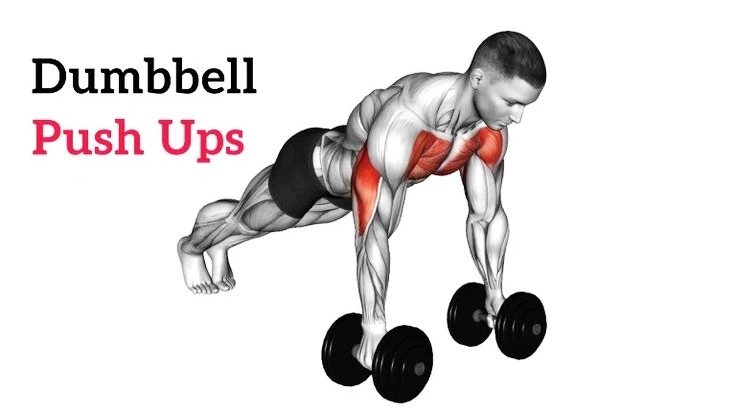Dumbbell push ups sound simple, right? Just regular push ups… with dumbbells?
Honestly—not quite.
That small tweak changes everything. More depth. More control. Less wrist pain. And yeah, more burn.
You drop into one of these at the gym, and someone nearby will glance over. Trust me.
It looks clean, but hits hard.
In this guide, I’ll break down how to do dumbbell push ups properly, what muscles they hit, and how to use them in a real training plan.
What is Dumbbell Push Ups?
Basically, dumbbell push ups are just push ups where your hands grip dumbbells instead of being flat on the floor.
Sounds like a small change. But honestly, it feels totally different. You go deeper, stay more stable, and your wrists won’t hate you.
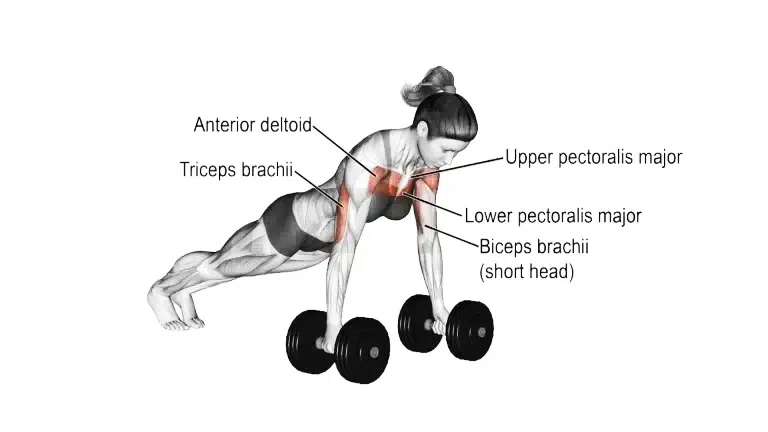
💪 What muscles does it work?
- Chest – deeper push = better stretch
- Triceps – your arms push every rep
- Shoulders – especially the front part
- Core – your abs stay tight so your hips don’t drop
💪 Why is it better than regular push ups?
- More depth = more muscle work
- Wrist-friendly – no awkward bend like flat palms
- Better control – more muscles keeping you steady
- Easy to level up – add weight, change grip, go explosive
How to Do Dumbbell Push Ups
Push ups with dumbbells? They just hit different—if you do them right.
Here’s how to set up and nail every rep.
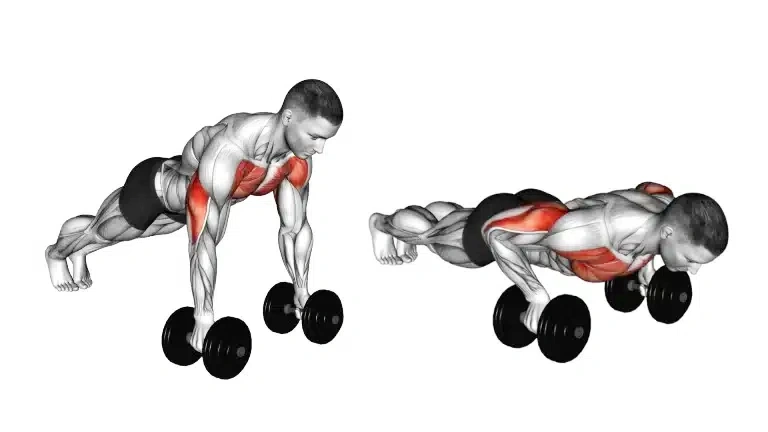
1. Set up the dumbbells
- Use stable dumbbells—hex shape is best
- Place them shoulder-width apart on the floor
- Make sure they don’t roll (safety first)
2. Get into position
- Grip the handles tight
- Arms straight, shoulders stacked over hands
- Legs extended, core tight, back flat
- Your body should be a straight line, head to heels
3. Lower your body
- Bend your elbows
- Lower your chest between the dumbbells
- Go deep—but stay in control
- Keep elbows close, about a 45° angle
4. Push back up
- Drive through your palms
- Return to the start
- Don’t lock your elbows—stay active
⚠️ Common mistakes to avoid:
- Hips sagging? Tighten your core
- Hands too wide? Keep them shoulder-width
- Dumbbells rolling? Use rubber gym mats or switch weights
Dumbbell Push Up Variations
There’s no single way to do dumbbell push ups. Once you’ve got the basics down, you can tweak stuff—grip, angle, even add a row—to mix it up.
Each variation has a purpose. Choose based on your goal.
🔹 Narrow-Grip Dumbbell Push Up
A simple change: bring the dumbbells closer together. That’s it. But wow, your triceps will feel the difference.
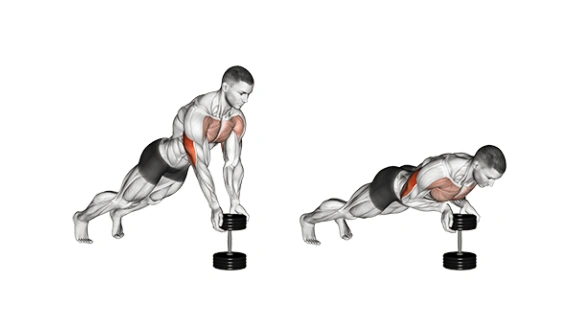
Why try it: More arm work. Less chest. Feels tight and controlled.
Targets:
- Triceps (main focus)
- Chest (secondary)
- Core for stability
Tips:
- Keep elbows tucked in
- Move slow to avoid elbow flare
- Great for building pressing strength
🔹 Wide-Grip Dumbbell Push Up
Move the dumbbells wider than shoulder width. Now the chest takes over.
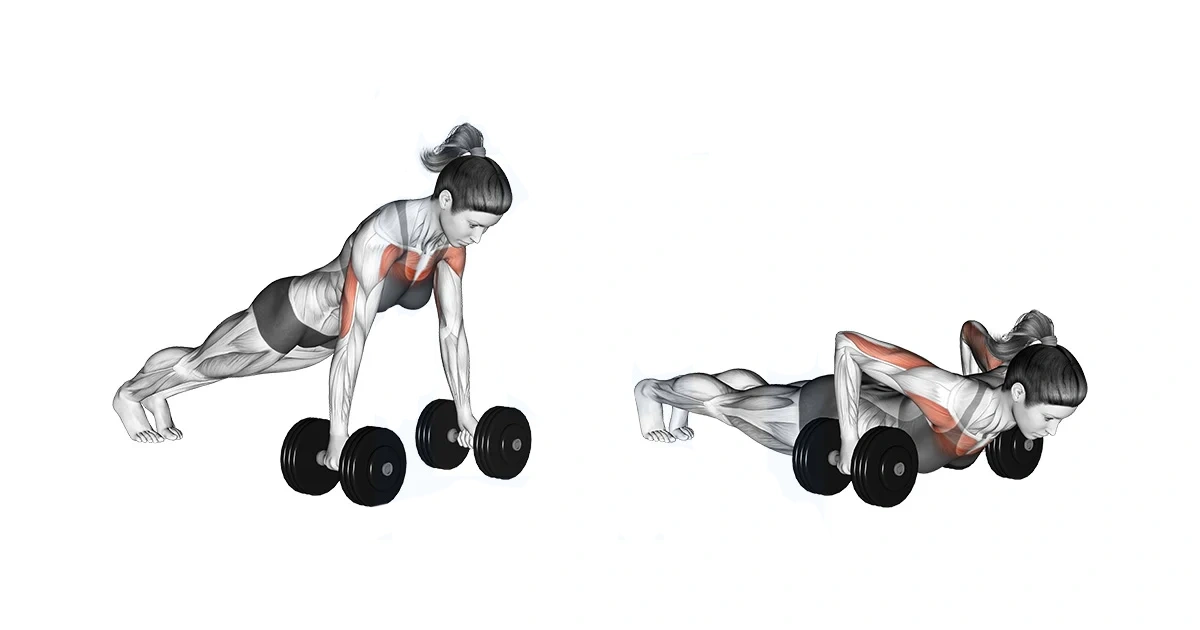
Why try it: It gives you a deep chest stretch, especially on the outer pecs.
Targets:
- Chest (especially outer)
- Front shoulders
- Less triceps activation
Tips:
- Keep your core tight
- Avoid letting hips drop
- Control the descent—don’t bounce
🔹 Dumbbell Push Up + Row (Renegade Row)
You do a push up, then pull one dumbbell up in a row. Alternate sides.
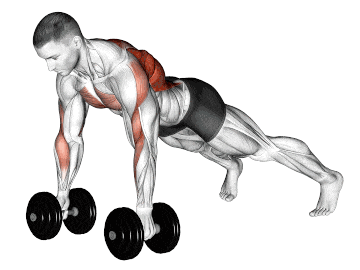
Why try it: Combines push and pull in one move. Extra core work too.
Targets:
- Chest + triceps (push)
- Lats, traps, rear delts (row)
- Core (big time)
Tips:
- Use lighter dumbbells
- Move slow—don’t twist too much
- Feet wider = more balance
🔹 Weighted Dumbbell Push Up
Throw on a weighted vest or a backpack with plates/books. Keep the same form.
Why try it: Adds resistance. Makes the basic move much harder.
Targets:
Same as basic version—just more load
Tips:
- Only do this when your form is rock solid
- Don’t overload too fast
- Use a spotter or mirror if possible
How to Add Dumbbell Push Up to Your Weekly Workout
Push ups with dumbbells can be a main move or a solid finisher. It depends on how you use them—and what you’re training for.
Here’s how to build them into a plan that actually makes sense:
🔹 First, pick your goal
Choose one. Don’t mix styles every day. Stick to one for at least 3–4 weeks.
| Goal | How to Train | When to Do It |
|---|---|---|
| Build muscle | 4 sets × 8–12 reps, slow and controlled | After bench press or as a main push move |
| Get stronger | 4–5 sets × 5–6 reps, add weight (vest/backpack) | Early in your push day workout |
| Build endurance | 3–4 sets × 15–20 reps, bodyweight only | As a finisher or quick home workout |
| Core & control | 3 sets × 8–10 reps, with row or feet elevated | Mid or end of upper body day |
🔹 How often to train them
- 2–3 times per week is plenty
- Leave at least 1 day between sessions (don’t crush push-ups two days in a row)
- Combine with other push movements like:
- Dumbbell bench press
- Overhead press
- Triceps dips
- Dumbbell bench press
🔹 Sample weekly split (simple example)
- Monday – Push day: Dumbbell push ups (strength focus)
- Wednesday – Pull day: Back, biceps, core
- Friday – Push day again: Dumbbell push ups (volume or variation)
So now you’ve got the plan.
You know what dumbbell push ups are, how to do them, how to switch them up—and how to fit them into your week without overcomplicating things.
You don’t need fancy gear. Or long workouts. Just dumbbells, some floor space, and a plan.
Pick one variation. Stick with it. Stay consistent.
Dumbbell push ups don’t just build muscle—they build control, confidence, and clean form that carries over to everything else.
Start simple. Keep it sharp. You’ll feel the difference in a few sessions.

Hi, I’m Alex Carter, part of the editorial team at Leadman Fitness. We specialize in crafting premium custom racks, cable machines, functional trainers, and strength accessories for home and commercial gyms. With a background in competitive powerlifting and gym design consulting, I’ve spent years testing gear under heavy loads and optimizing layouts for efficiency.
I focus on translating real-world user frustrations—like space limitations, budget constraints, or durability needs—into actionable solutions. By collaborating directly with our engineers and facility owners, I ensure our custom equipment evolves to solve the unspoken challenges lifters face daily. What I share isn’t textbook advice; it’s battle-tested insight from racks I’ve welded, cables I’ve replaced, and gym floors I’ve trained on.
